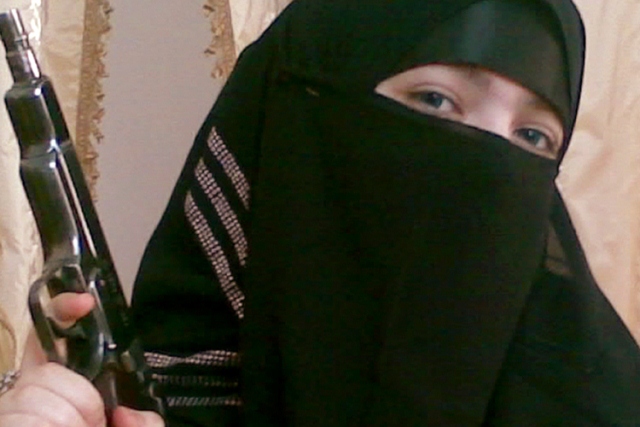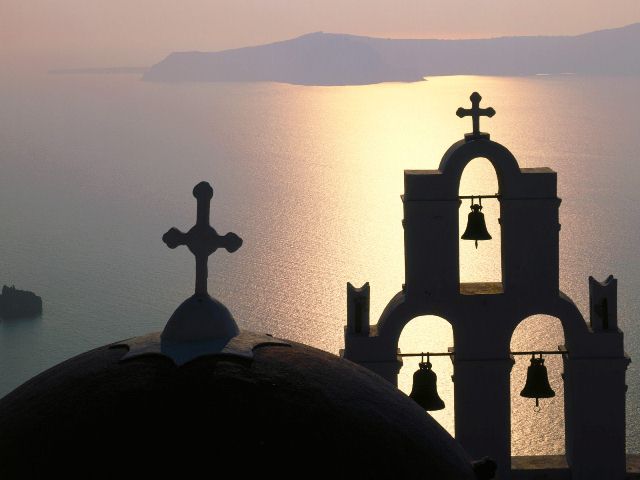By Jaston Binala.
Historically, state religions were the outcome of cultural attachment to a dominant religion in a country. Tanzania’s dominant culture is Bantu in which most members of society were ancestor worshipers before the coming of the alien religions of Hindu, Islam, Christianity, Bahai and others.
The introduction of these alien religions into Tanzania have eaten away the original cultural orientation; but no particular religious group is dominant in this country. It is therefore not reasonable or possible to associate any one religion to the national culture.
Founders of this nation discerned secularism to be the best option to use in forging a cohesive, unitary nation comprising of people with differing religious beliefs, differing tribes and differing sub-cultures.
Tanzania has not conducted a religion-based census for many years. It is therefore not easy to determine definitively the exact number of followers of any particular religion, although religious interest groups may have figures they believe to be accurate.
The Christian Organization Operation World estimates Tanzania’s current population to be 45,039,573 with an annual growth rate of 2.92%. The organization claims the largest religion in Tanzania is Christianity with followers accounting for 54.07% of the population. But the United States Government Central Intelligence Agency, the CIA has made other estimates.
In contrast to Operation World figures, the CIA claims the current tanzania population is 48,261,942 (July 2013 estimates), and that on mainland Tanzania, 35% of the population is Muslim, while another 35% of the population comprises worshipers of God through indigenous African beliefs. It is only the remaining 30% of the population that is Christian according to the CIA, which adds that on the islands of Zanzibar the population is 99% Muslim.
The Tanzania Government recently refused to take a religious census saying it was none of their business what religion individual citizens followed as long as they did not disrupt the peace. Tanzania therefore plausibly remains a secular state but with its citizens free to practice the faith of each individual’s choice. As seen above, there is completely no basis for adoption of a state religion in Tanzania.
The constitution of the United Republic of Tanzania currently in force, and the constitution used to administer Zanzibar islands, both state that the people of Tanzania are free to worship God using the religion of each individual’s choice. It is this position of the constitutions which has made Tanzania a secular state. The constitution currently in force makes the following declaration concerning religion:
- · Every person has the right to the freedom to have conscience, or faith, and choice in matters of religion, including the freedom to change his religion or faith.
Global challenges on religion today
The dictionary meaning of religion is that it is a set of beliefs concerning the cause, nature, and purpose of the universe, especially when the universe is considered as the creation of a superhuman agency or agencies. Religous beliefs usually involve devotional and ritual observances, often containing a moral code governing the conduct of human affairs and behaviour in general.
Religion is also described as a set of variously organized beliefs which chart out the relationship between natural and supernatural aspects of reality, and which define the role of humans in that relationship.
While religion is difficult to define, one standard model of religion used in religious study courses was proposed by Clifford Geertz, who simply called it a “cultural system” (Clifford Geertz, Religion as a Cultural System, 1973).
Many religions have narratives, symbols, and sacred histories that are intended to explain the meaning of life and/or to explain the origin of life or the Universe. From their beliefs about the cosmos and human nature, people derive morality, ethics, religious laws or a preferred lifestyle. According to some estimates, there are roughly 4,200 religions in the world.
Many of these religions have in reality just organized behaviours, clergy, a definition of what constitutes adherence or membership, holy places, and scriptures.
The practice of a religion also includes rituals, sermons, commemoration or veneration of a deity, gods or goddesses, sacrifices, festivals, feasts, trance, initiations, funeral services, matrimonial services, meditation, prayer, music, art, dance, public service or other aspects of human culture. Religions may also contain mythology—which are old stories to support the belief.
The word religion is sometimes used interchangeably with faith or belief system from which those who believe in it derive morality, ethics, religious laws or a preferred lifestyle.
A global 2012 poll reports that 59% of the world’s population is religious, and 36% is not religious, including 13% who are atheists, with a 9 per cent decrease in religious belief observed from 2005.
In the course of explaining life, religion has bestowed upon itself the duty to propagate ethical morality on earth, which is an attempt to make life orderly, safer, happier and devoid of evil. But this purpose and struggle has resulted into an opposite, adverse and somewhat contradictory outcome.
A challenge now faces the world, where a number of religions take actions which contradict the ultimate purpose of religions stated above. Religion has become the source of conflict and war.
The contradictions, which have come in the form of war and civil strife, are mainly fuelled by religious intolerance—the disapproval of other people’s religious views and practice. While there are many places on earth experiencing religion-based conflict, the political conflicts in Northern Ireland, the wars in Iraq, Afghanistan, Somalia and many other places on earth are connected to religious intolerance.
Profile of Religious Intolerance:
Religious intolerance is intolerance against another person’s religious beliefs, or another group’s religious beliefs, or another person’s practices or lack of faith and its practice.
Religious intolerance is when a group (e.g., a society, religious group, non-religious group) specifically refuses to tolerate practices, persons or beliefs on religious grounds (i.e., intolerance in practice), and starts to take actions of persecution against another group ‘thought to be wrong’.
According to the 19th century British historian Arnold Toynbee, for a religious establishment to persecute another religion for being “wrong”, the actions ironically put the persecuting religion in the wrong, undermining its own legitimacy.
The US Government produced a report on religious freedom around the globe in the year 2000. In the annual report on international religious freedom, the U.S. State Department identified China, Myanmar, Iran, Iraq and Sudan as countries persecuting people for their religious faith and practices.
The advocacy group Freedom House produced a report entitled “Religious Freedom in the World” in the year 2000 which ranked countries according to their religious freedom. The countries receiving a score of 7, indicated those were countries where religious freedom was least respected. Civil liberties are minimal in these countries.
The most intolerant nations getting the score 7 included Turkmenistan, Iran, Saudi Arabia, Sudan, Myanmar and North Korea. China was given a score of 6 overall, but Tibet was listed separately in the score 7 category.
Countries receiving a score of 1, were understood to maintain the highest level of religious freedom. This list included Estonia, Finland, Ireland, the Netherlands, Norway and the United States.
Religious Tolerance In Islam
In the religion of Islam, the following definition for religious tolerance is given by an Arab Website : WHILE on [his] deathbed, Sayyidna Omar ibn Al-Khattab (mercy be upon him) dictated a long will consisting of instructions for the next caliph. Here below is the last sentence of that historic document:
“I instruct you on behalf of the people who have been given protection in the name of Allah and His Prophet (peace be upon him) i.e. non-Muslim minorities (dhimmis) within the Islamic state.
“Our covenant to them must be fulfilled, we must fight to protect them, and they must not be burdened beyond their capabilities.
“Sayyidna Omar was lying in pain because of the wounds inflicted on him by a non-Muslim who had stabbed him with a dagger soaked in poison while he was leading the fajr prayer. It should also be remembered that he was the head of a vast empire, ranging from Egypt to Persia.
“From normal rulers of his time or ours, we could have expected vengeance and swift reaction. In contrast the enlightened rulers today would rain bombs and missiles on mere suspicion of murder conspiracy in a similar situation.
“From a very forgiving head of state we could have expected an attempt to forget and forgive, and that would be considered noble. But a command to protect the minorities and take care of them?”
What is even more remarkable is that for Muslim historians the entire affair was just natural. After all it was the caliph himself who had established the standards by writing the guarantees for the protection of life, property and religion in decree after decree as Muslims opened land after land during his rule. The pattern established here was followed for centuries throughout the Muslim world.
Sayyidna Omar was following what he learnt from the Prophet Muhammad (S.A.W) himself. That the protection of life, property and religious freedom of minorities is the religious duty of the Islamic state. That he personally would be demanding justice in the hereafter on behalf of a dhimmi who had been wronged by a Muslim. That there is no compulsion in religion, and that Muslims must be JUST to friends and foe alike.
The result of these teachings was a Muslim rule that set the gold standard for religious tolerance in a world not used to the idea–not only that the Muslim history is so remarkably free of the inquisitions, persecutions, witch hunts, and holocausts that tarnish history of other civilizations. His rule protected its minorities from persecution by others as well. It protected Jews from Christians and Eastern Christians from Roman Catholics. In Spain under the Umayyads and in Baghdad under the Abbasid Khalifahs,
Christians and Jews enjoyed a freedom of religion that they did not allow each other or anyone else. This [is the] exemplary tolerance built into Islamic teachings.
The entire message of Islam is that this life is a test and we have the option of choosing the path to hell or to heaven. Messengers were sent to inform about the choices and to warn about the consequences. They were N O T sent to forcibly put the people on the right path.
The job of the Muslims is the same. They must deliver the message of Islam to the humanity as they have received it. They are neither to change it to make it attractive, nor to coerce others to accept it.
The situation of the “international community” has been one in which extortions to display tolerance become a vehicle for imposing one’s own intolerance.
Recently, some people declared that the demolition of Buddhist statues in a country with no Buddhist minority violated Islam’s teachings on religious tolerance.
For Muslims religious tolerance is not about political posturing. It is a serious religious obligation. They must be a force against all intolerance, even that which is promoted in the guise of tolerance.
Religious Tolerance In Christianity
The Roman Catholic Encyclopaedia provides the following definition for Religious Tolerance: that ‘toleration’ in general signifies patient forbearance in the presence of an evil which one is unable, or unwilling, to prevent.
Religious toleration is thus understood to be the magnanimous indulgence which one shows towards a religion other than his own, accompanied by the moral determination to leave it and its adherents unmolested in private and public, although internally one views it with complete disapproval as a “false faith”.
The idea of toleration
Considered in the abstract, the general idea of toleration contains two chief moments: First, the existence of something which is regarded as an evil by the tolerating subject; Second, the magnanimous determination not to interfere with the evil, but to allow it to run its course without molestation.
Viewed under the former moment, toleration is akin to patience which also connotes an attitude of forbearance in the face of an evil. Patience, however, is rather the endurance of physical sufferings (e.g. misfortune, sickness)–the toleration of an ethical evil.
The obligation to show practical civic toleration
For the practical attitude of Catholics towards the heterodox, the Church has inculcated the strict command of neighbourly love, which corresponds to Christian charity: “Thou shalt love thy neighbour as thyself.”
The sincerest love for the erring is indeed quite compatible with keen repugnance for the error to which they cling.
From the very definition of practical civic tolerance springs the maxim which St. Augustine expresses as follows:
“Diligite homines, interficite errores; sine superbia de veritate præsumite, sine sævitia pro veritate certate” (Love men, slay error; without pride be bold in the truth, without cruelty fight for the truth) (Against Petilian 1.29). God is a God of love, and consequently His children cannot be sons of hate.”







